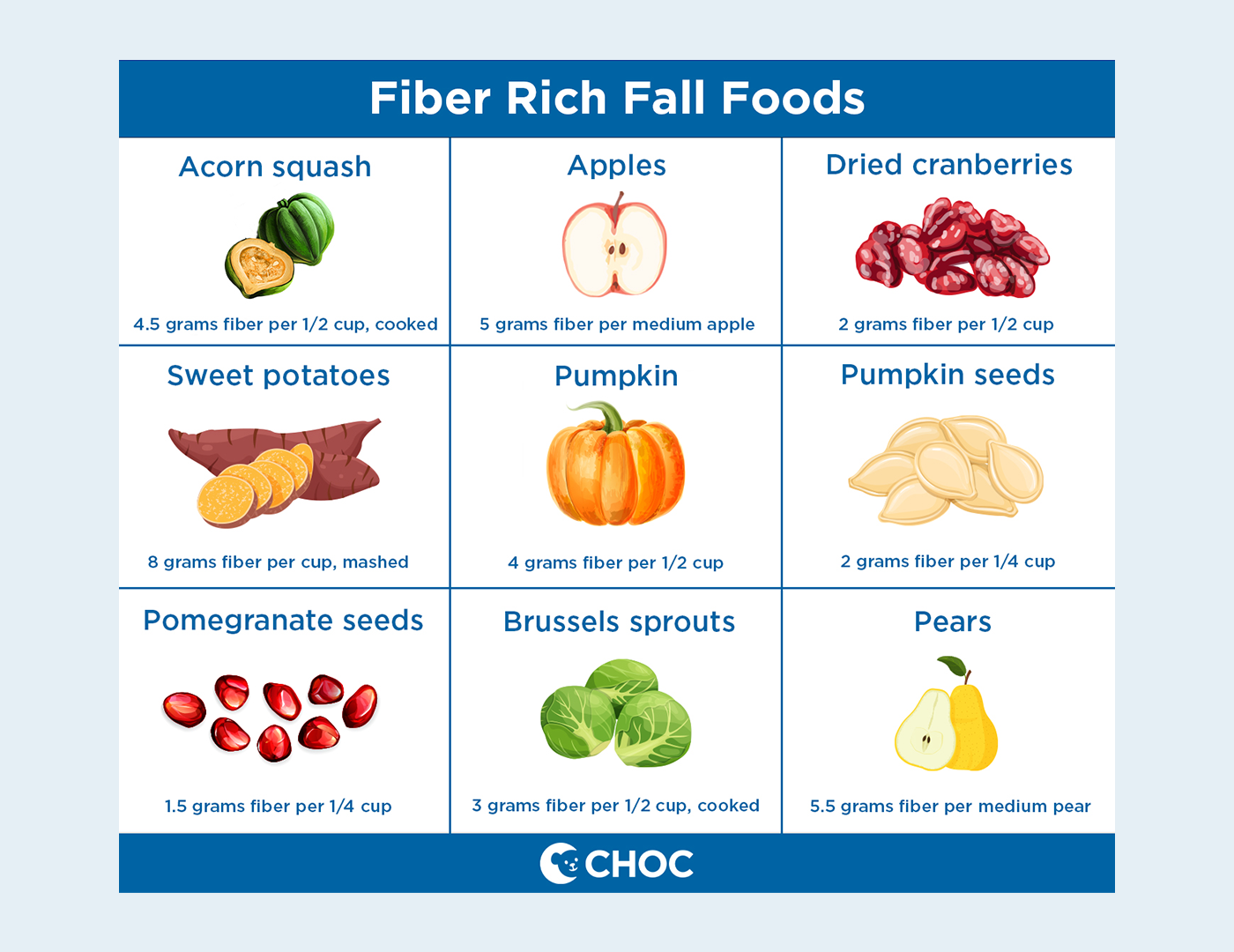By Jenna Long, CHOC clinician dietitian
Fiber is a buzzword in the world of the health-conscious. However, few take the time to explain what fiber is, how to include it in your diet, and most importantly, why eating fiber is beneficial to your health.
What is fiber?
Fiber is a type of carbohydrate (carb) that the body does not absorb. Fiber can be found in fruits, veggies, whole grains and beans.
Fiber passes right through our bodies. To be more direct, but maybe make you uncomfortable – we don’t absorb fiber, we poop it out!
So, what makes fiber so fabulous??
Fiber is famous for improving gut health, but it goes far beyond that.
Fiber can benefit your health in the following ways:
- Lowers LDL cholesterol, or “bad” cholesterol levels in blood.
- Improves satiety, or feeling full, which can help with maintaining or reaching a healthy weight.
- Helps prevent constipation when paired with enough water.
- Helps regulate blood sugar.
Is all fiber created equal?
Increasing fruits, veggies, beans and whole grains is a good idea for most people.
However, depending on health goals, different types of fiber have different effects. In general, fruits and vegetables contain a mixture of both types of fibers, but usually contain more insoluble fibers than soluble fibers.
Soluble fiber absorbs water to form a gel and slow down digestion. In addition, soluble fiber:
- Helps lower unhealthy cholesterol levels.
- May help improve blood glucose levels.
- Help keep us full longer.
- Helps prevent constipation by adding more water to stool, making it softer & easier to pass.
- Examples: oatmeal, beans, citrus, peas
Insoluble fiber does not dissolve in water and speeds up digestion. It also:
- Helps prevent constipation by speeding up digestion time and keeping things moving.
- Feeds the “good bacteria” in our gut.
- Examples: wheat bran, flaxseed, fresh apples with skin, brown rice
The recommended fiber intake for adults is 21-38 grams per day. To determine how much fiber you should serve your child, some experts recommend taking your child’s age (for example, 7 years old) and adding 5-10 to get a goal amount of fiber per day (12-17 grams per day).
There is such thing as too much fiber
Increasing the fiber in your diet too quickly can lead to some unpleasant side effects, such as gas, pain and bloating. To avoid this, it is important to make sure your child is getting enough water first and then slowly increase fiber.
What to work towards:
- Make half of your child’s plate fruits and vegetables
- Portion size will vary based on age and size
- When serving your child grains, aim for half of the grains to be whole grains. Consider making the following swaps:
- White rice to brown rice
- White bread to whole wheat bread
- Standard pasta to whole wheat or bean-based pasta
- Add a fruit and/or vegetable serving to your usual snacks
- String cheese and apple slices
- Yogurt and berries
- Hummus with pita chips and carrots
- Serve fruits and veggies with the peel (peel = fiber)
- Sweet potatoes, cucumbers, apples, pears are all excellent sources of fiber
How to increase fiber this fall
Eating seasonally can help with sustainability and lower the price of your grocery bill. Foods also tend to taste their best when grown in the season where they shine.
Based on USDA’s What’s in the Foods You Eat tool, these following foods aren’t just seasonal and delicious, they are also rich in fiber.

 Print this chart
Print this chart
Get more expert health advice delivered to your inbox monthly by subscribing to the KidsHealth newsletter here.
Learn more about CHOC’s Clinical Nutrition Program
At CHOC, we specialize in providing a full continuum of pediatric nutrition services, including inpatient and outpatient services, depending on our patients’ needs.






